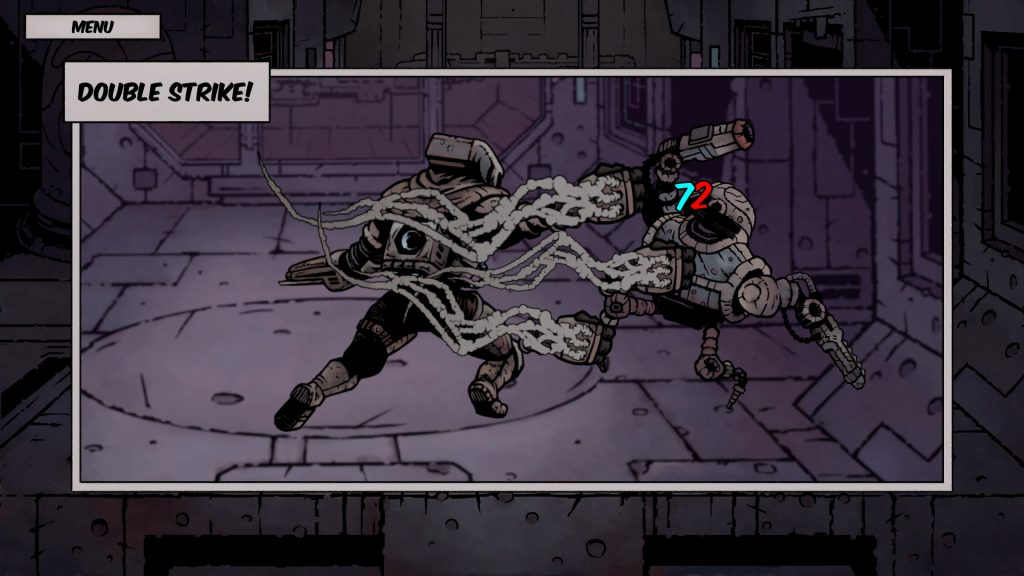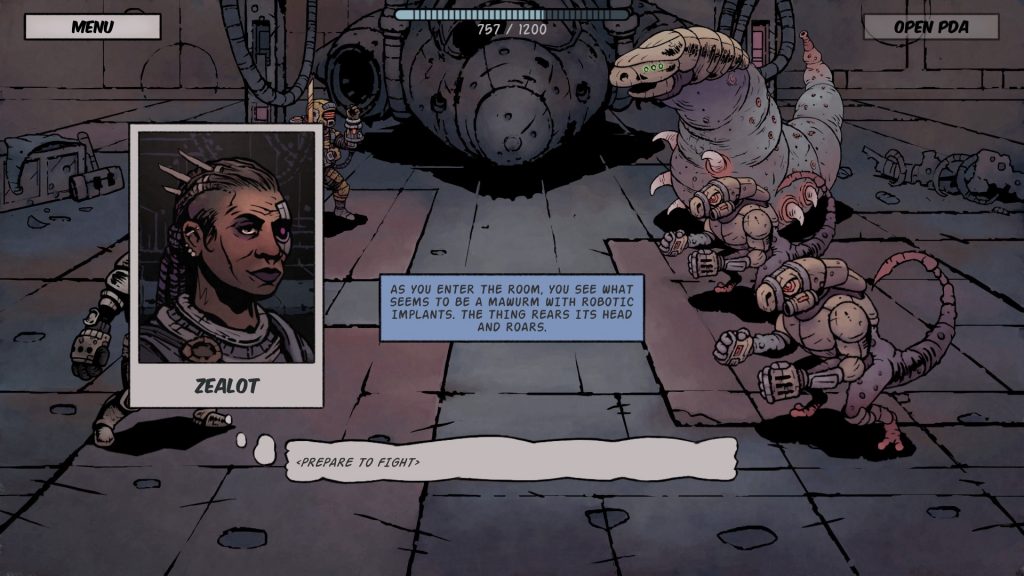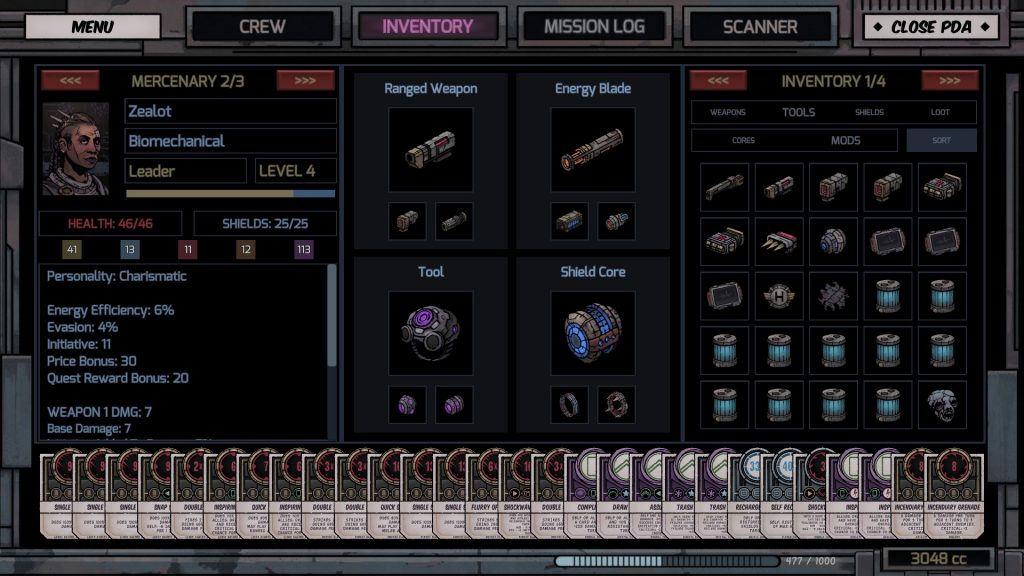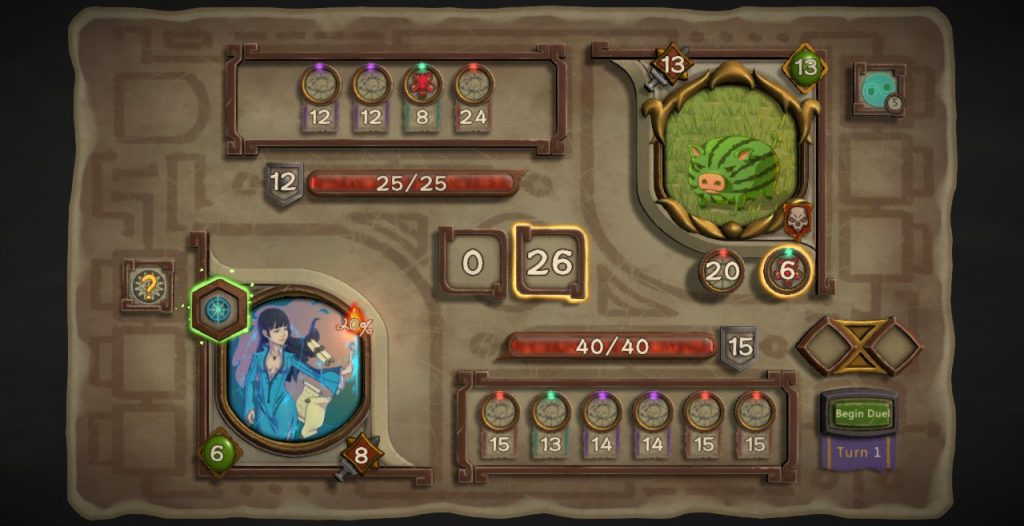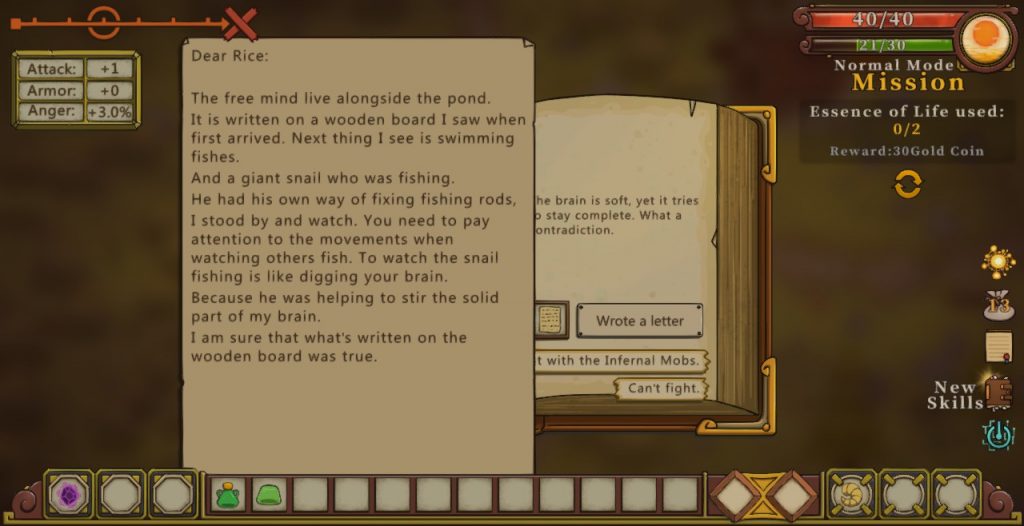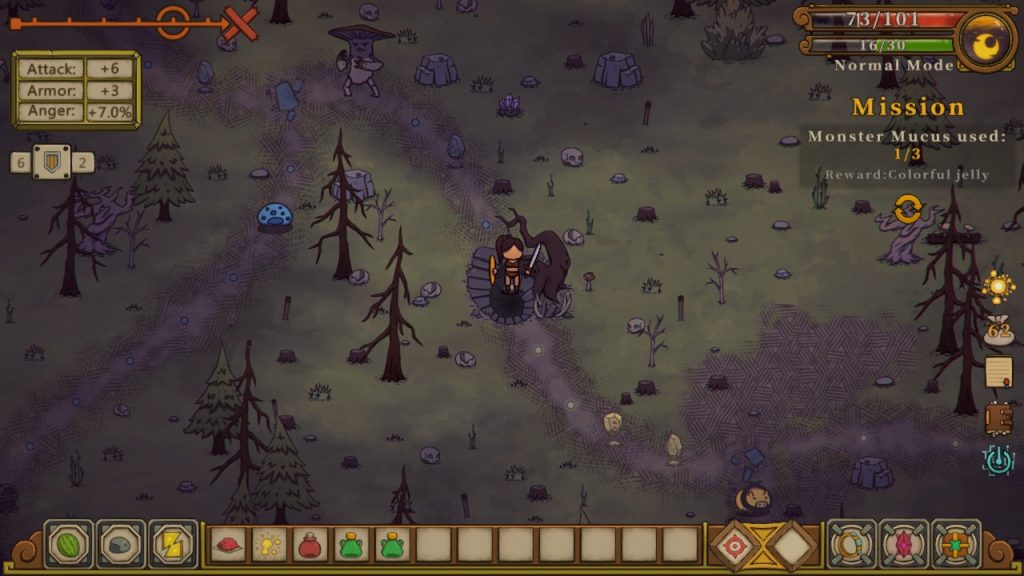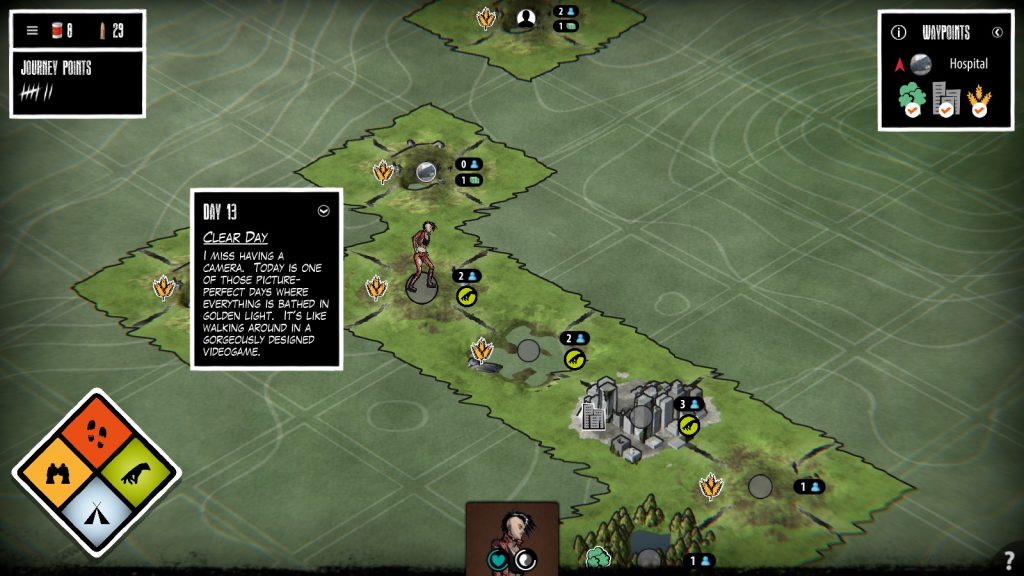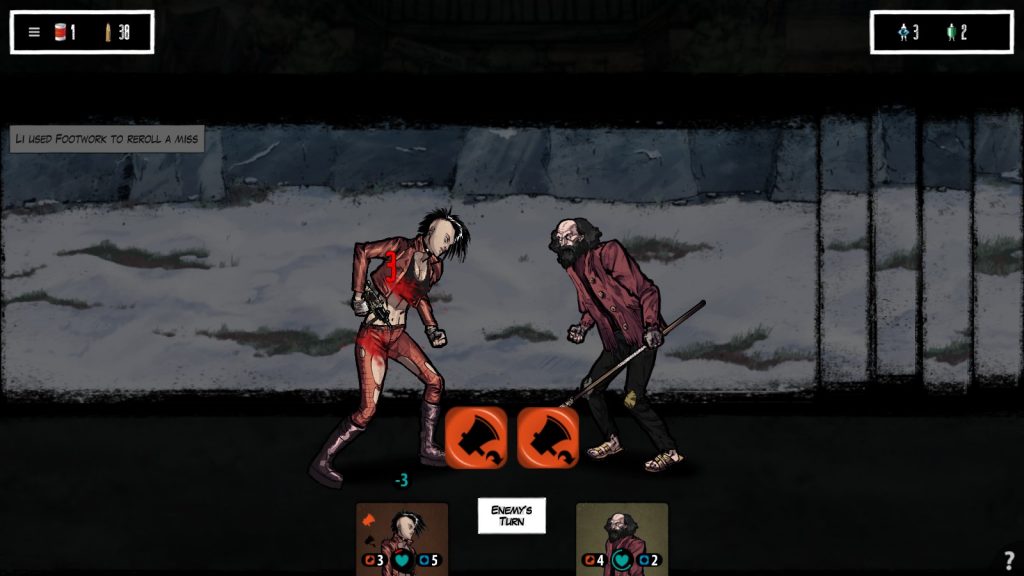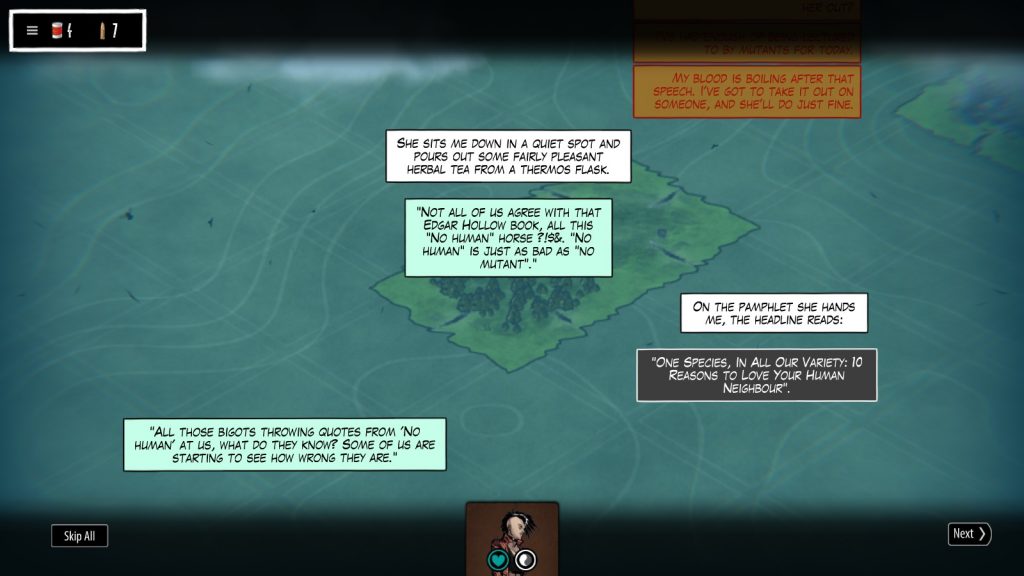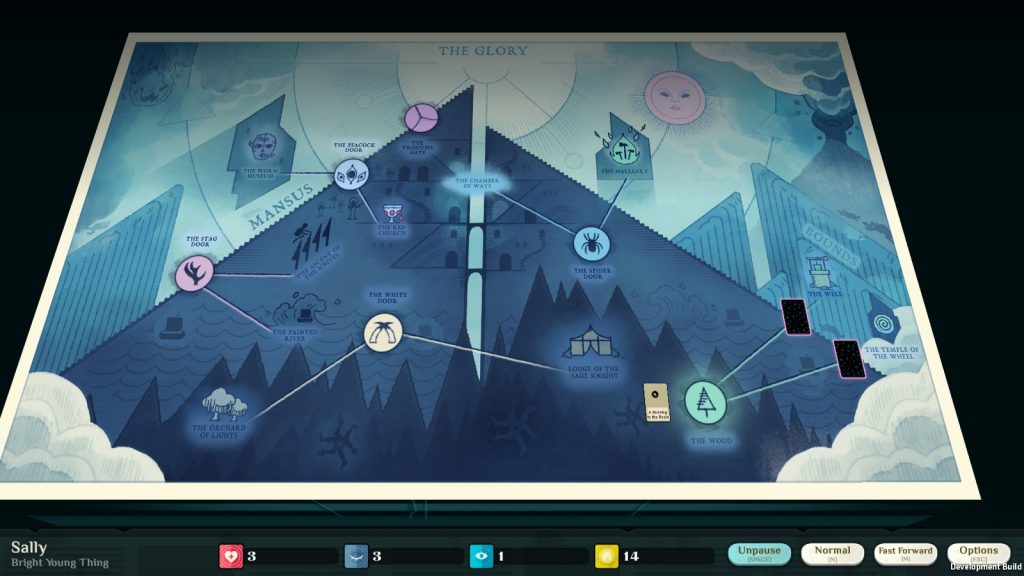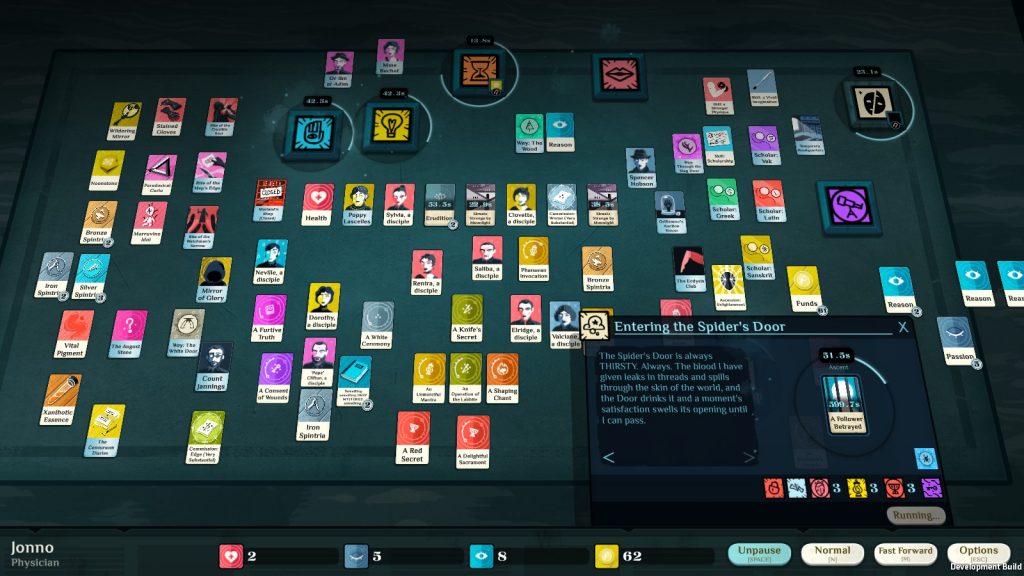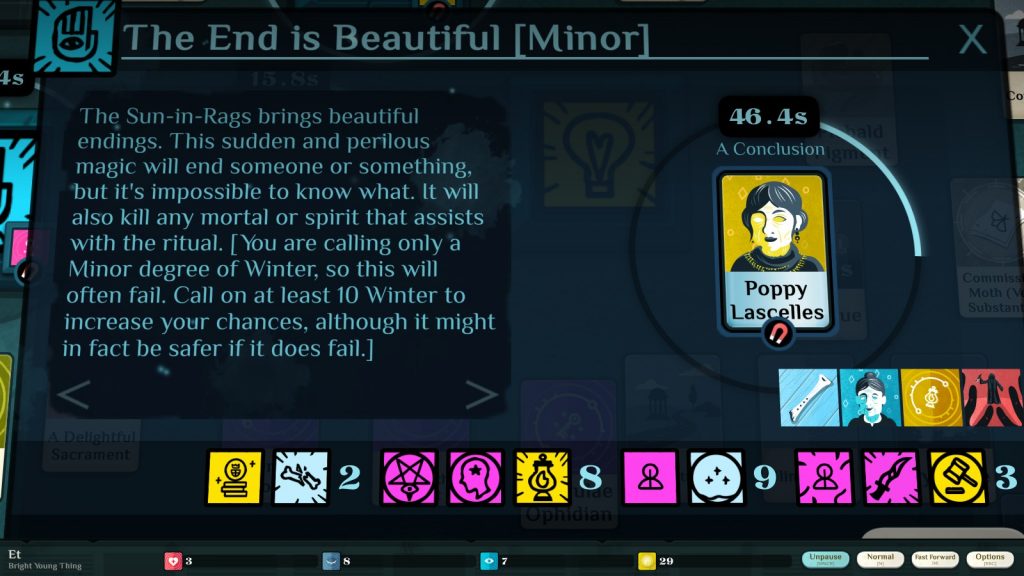Slay The Spire (Review)
Source: Cashmoneys
Price: £19.49
Where To Get It: Steam
Other Reviews: Early Access
Ah, Slay the Spire. It’s charmed us so throughout Early Access, with its simple, but deadly card based combat, three characters, and its surreal, grim world of top-hatted slimes and the Shapes Museum…
…Yes, I said surreal and grim. But not without a touch of humour.
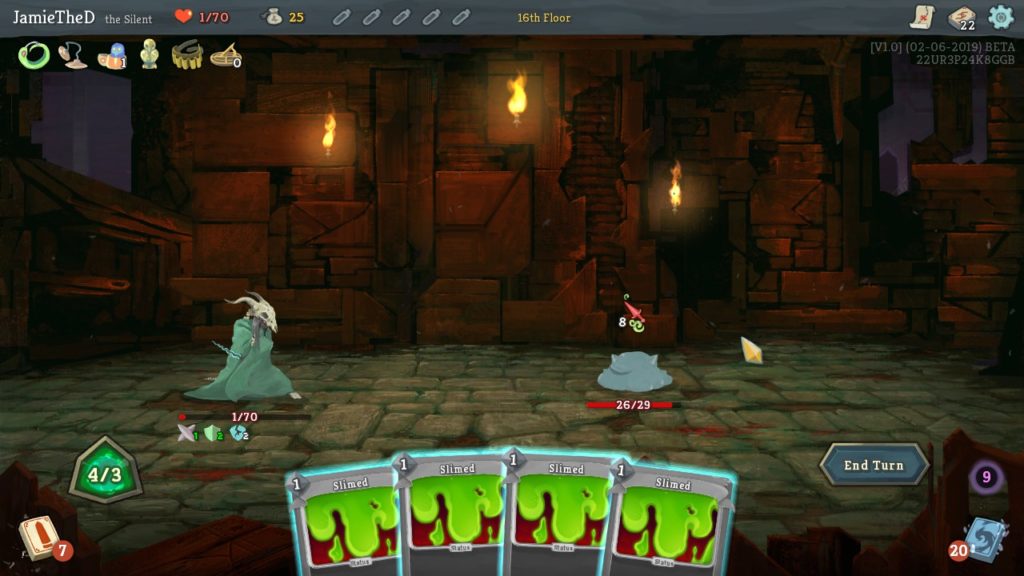
Since I last reviewed Slay the Spire, waaaay back when, a new character had been added (the Defect, an automaton whose deck revolves around the orbs that he summons, be they damaging lightning, cool, buffing ice, or other, more out there types), Ascension mode (where you can finally Slay the Spire, a living construct with a beating heart), and a whole host of balancing. So much more, on the other, similar looking hand, hasn’t changed, and what hasn’t changed… Hasn’t really needed to change.
It’s still a game where you’re thinking both in the short term (How the hell do I get through this fight with a Snecko without too much damage, despite the fact they’re a git who randomises my once cheap cards to expensive hell?) and the long term (Once I beat the Snecko, do I go ballsy and try the random events, which could lead to worse things than the Snecko, but greater rewards, or do I slog through these… Another boss monster before the final campfire? RANDOM EVENTS IT IS!) is optimal, and the mix of patterns (enemies have very specific strategies they employ) and randomness (drops, money, what cards you get to add to your deck) mean that a lot of the game is, effectively, risk management.
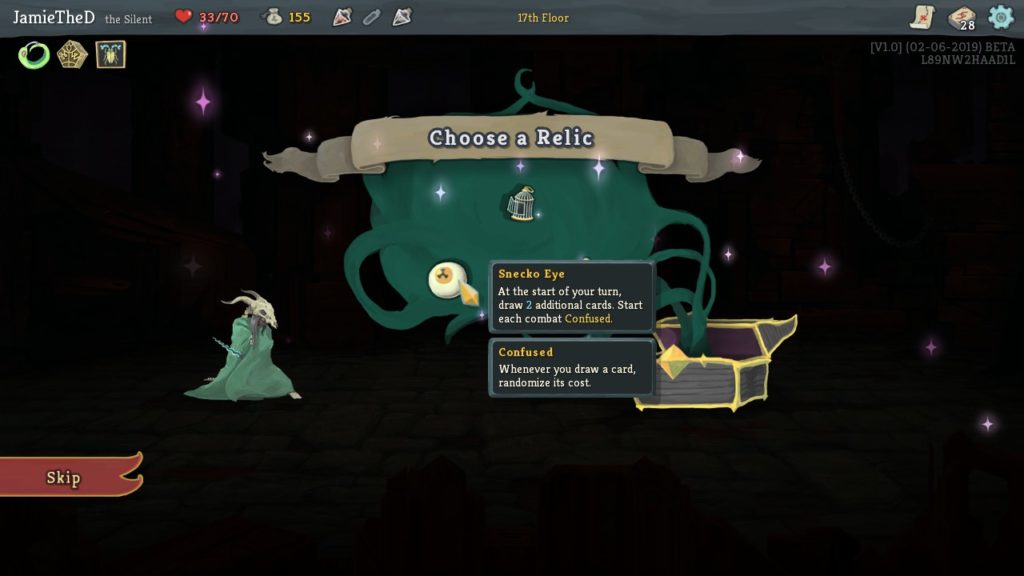
And very tense risk management it is, where even seemingly hopeless situations can be won through, only for an unfortunate series of events to bring it all crashing down. An unfortunate series of events that may have started… in the last map. So, while it can sometimes be hard to judge, I’ve rarely felt like the bad end of a run is not my fault.
Of course, just saying this doesn’t really help much, so let’s look at an example run, playing as the Silent. After your first run, so long as you’ve at least beaten the first boss, you get a benefit. From the beginning, I chose… Poorly. Specifically, I chose losing 7 of my max HP (normally fine) for a Rare Relic (normally fine.)
What I got was a relic where, so long as I didn’t play more than 3 cards in a turn, I’d get 3 more next turn. This, along with a few poison cards, actually played surprisingly well, if nerve wrackingly. I was always losing HP, because I was playing much more conservatively with my cards than I normally would as the silent, but when your “Poison everyone a lot” cards keep coming up, creatures still die quickly. I beat the first boss (Hexaghost) with… 8 damn HP to spare, and got the powerup (along with the one I’d previously gotten where enemies would now drop 2 cards instead of 1) where I could get 2 relics for each Elite enemy I successfully fought.
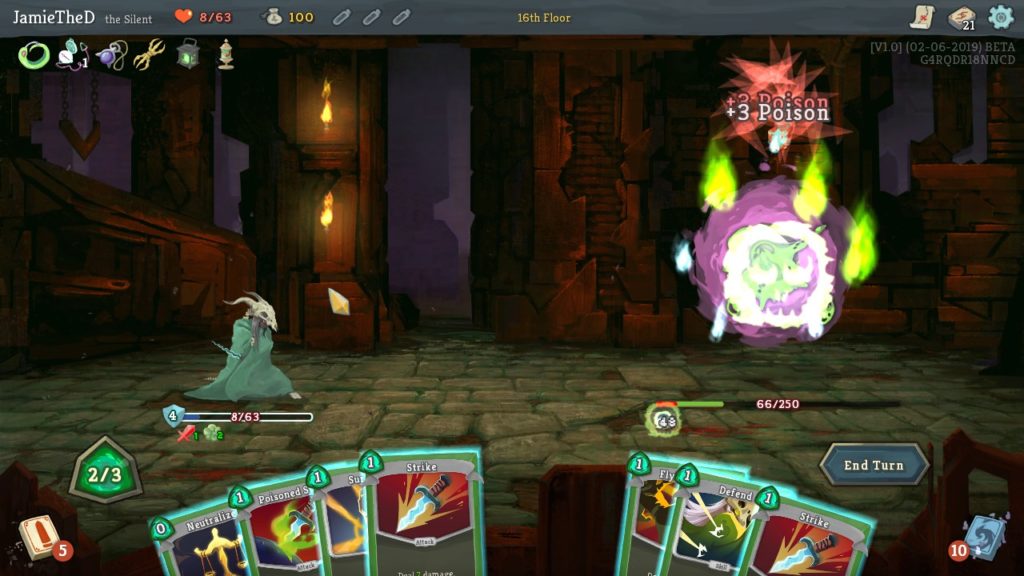
And so, in my quest for a kind of power you don’t normally see the Silent possess, I continued to choose… Poorly. It didn’t matter that I’d fully healed, because the very first fight I got into (Three birds, which is normally an easy fight), I chose to fight according to my relics, and lost half my HP. Then I lost some more HP getting my max HP up. Then I came out of an Elite fight with less than 10HP again, merely four encounters in, and the very next encounter was… The Knight and Priestess. A deadly combo even normally, they killed me. Not without me killing the priestess, but, as with those ancient PSAs about knowing, that was only half the battle. Dead. Restart. And a lot of this was my choices.
Still, what with mods, the good accessibility, an excellent score, good aesthetics with a lot of visual clarity, that aforementioned humour breaking up the grim world, Slay the Spire is a tense, yet oddly compelling outing, and has remained so pretty much throughout.
The Mad Welshman goes with Snecko Eye whenever he gets the chance. That’s just the way he rolls.


